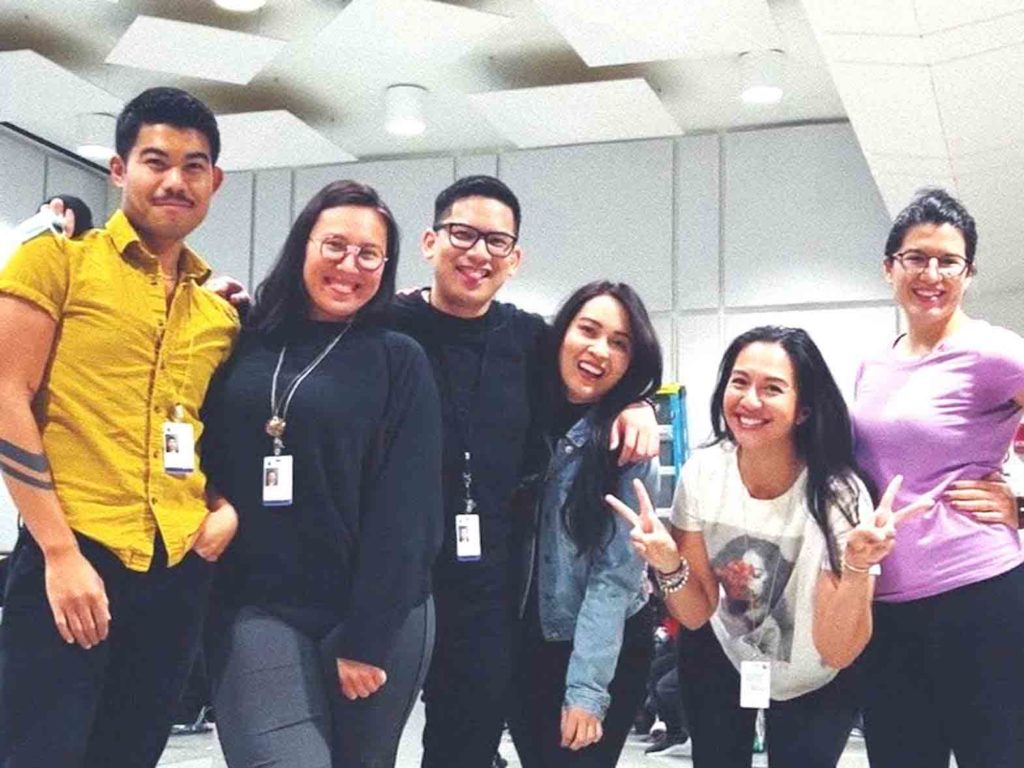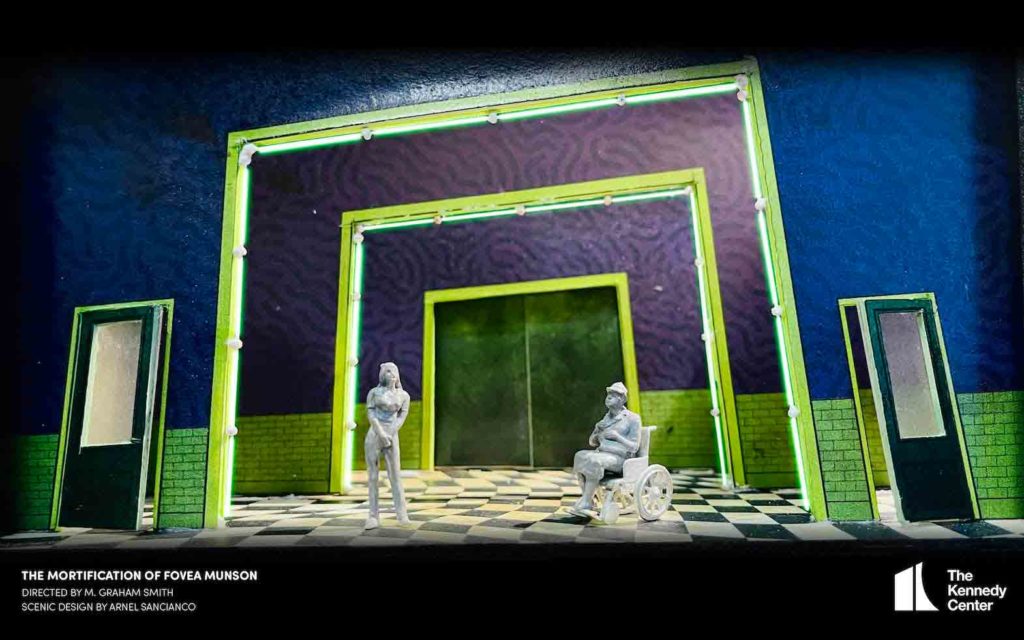Fil-Am artists prep musical premiering at Kennedy Center in D.C

Filipino American theater artists (from left) Ely Orquiza, Kelly Colburn, Justin Huertas, Justine Moral, Regina Aquino and Sally Imbriano. INSTAGRAM
WASHINGTON, DC — Filipino American theater artists are hard at work creating the world premiere of a musical at the John F. Kennedy Center for the Performing Arts. The endeavor is made even more meaningful because “The Mortification of Fovea Munson” features a Fil-Am protagonist.
Can life get any more mortifying for 12-year old Filipino American Fovea Munson? She’s already called Igor (as in Dr. Frankenstein’s assistant) by her classmates. Her summer camp’s been canceled. Her parents are making her work as a receptionist in their cadaver laboratory.
Things take an even more annoying turn when she discovers three heads without bodies. Ordinarily, this would have been a normal incident in the lab, but these ones talk and sing!

Filipino American set designer Arnel Sancianco’s model for “The Mortification of Fovea Munson.” CONTRIBUTED
Director M. Graham Smith has assembled Fil-Am collaborators for the stage adaptation of Mary Winn Heider’s middle grade novel, commissioned by the Kennedy Center’s Theatre for Young Audiences.
Musician Justin Huertas has composed the music and written the lyrics. Justine Moral stars as Fovea and Regina Aquino portrays Fovea’s mother and grandmother. Sally Imbriano is the understudy for all three characters. Kelly Colburn is assistant director, Ely Orquiza is dramaturg. Arnel Sancianco handles scenic design.
Special
Sancianco received a copy of the script last year. “At the time the show had one workshop under its belt. I watched the recording and listened to the demos. I couldn’t stop humming the opening number,” he says. “There was this specific moment where Fovea’s lola is introduced and it immediately reminded me of my lola. I hadn’t felt that level of representation in my work before. I knew I had something special in my hands.”
Born in San Diego, Sancianco is currently based in Tempe, Arizona where he is a professor of scenic design at Arizona State University. He was previously based in Chicago, where his credits include works for The Goodman, Steppenwolf, Lookingglass and American Theatre Company as well as regional theaters such as Oregon Shakespeare Festival, La Jolla Playhouse, American Players Theatre, The Rep at St. Louis and Milwaukee Rep.
When Sancianco was studying at University of California Irvine, he was on track to becoming an actor until he had a mortifying incident of his own. “No one thinks about casting Asians for theater,” a mentor told him. “Hearing this from someone I had respected made my heart sink and I watched what I had believed to be my life’s calling dissolve.”
It took until his third year of college to regain his footing. During a course in scenic design, his class was assigned to report on designers throughout history. “Mostly white. As we entered the late 20th century, I was introduced to Robert Brill … [a Filipino] American designer from San Diego like me! With a prolific career that I wanted. All at once, I finally felt seen. Robert Brill was the role model I had been looking for and because he had made a career in theater, I knew I could too.” (Brill is featured in the book Barangay to Broadway: Filipino American Theater History.)
Excited
Sancianco surveys how far he has come. “It’s a complicated halo halo of emotions. On one hand, I’m very excited to put a Filipino-centered story on stage. At the same time it breaks my heart that it took this long to do so.
“I’ve been designing theater for over a decade now and I can count on one hand the amount of Asian-centered narratives I’ve been part of. And while I’ve worked with many Filipino actors, I’ve never been able to work on a show where Filipinos get to be Filipino. I am so grateful for the folks at Kennedy Center who are able to make space for me and my culture.”

Filipino American set designer Arnel Sancianco. CONTRIBUTED
Explaining his process, Sancianco says, “This show is set in a lab and labs are where you learn, dissect, and experiment. I feel I did exactly that. We talked to a lot of specialists to help us explore how to create a world where three severed heads can sing and act.
To better serve the storytelling, he was not afraid to excise what was unnecessary. “We spent a lot of resources investigating what was going to be a fun effect. In the end, we discovered that what we developed, while super exciting, would actually make the performance clunky in the end. Now, to any other person this would have been time wasted, but to a designer like me, this was time spent knowing what this show was not, and in turn discovered more of what this show truly requires.
“A lot of my inspiration for the show came from the tone of [the] music. The demos brought me back to the days of reading Goosebumps books. I wanted to capture that nightmarish and ghoulish feeling of being a young kid thrown into angsty anxious space. Ultimately, I’m very excited with what we developed and can’t wait to see it on stage.”
Visit Kennedy-center.org.

